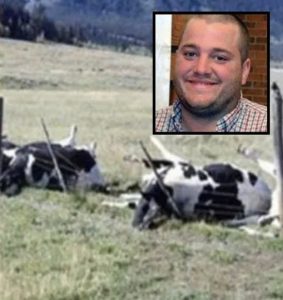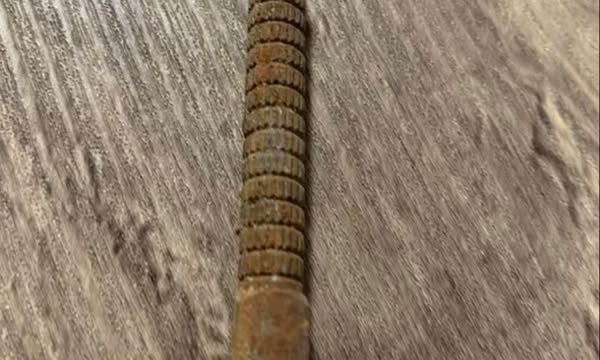On what seemed like just another warm summer morning in 2016, 29-year-old Michael Biadasz set out to do what he had done countless times before—prepare the manure pit on his family’s farm in Amherst, Wisconsin. Farming had always been a part of Mike’s life. He was passionate about agriculture, a dedicated beef farmer, and deeply committed to the family’s fourth-generation farm. His routine that morning seemed simple and familiar, but it would tragically become his last. Mike’s death, along with the deaths of sixteen cows, would shine a heartbreaking light on a rarely understood and invisible danger that lurks in the world of farming—manure gas.

It was the morning of August 15, 2016. With his usual energy and sense of humor, Mike snapped a photo and posted it to Snapchat, referring to the manure as “liquid gold” as he got ready to stir the pit. Despite the playful tone, the task he was about to do was one he had completed safely countless times before. However, that day, the conditions were different. As Mike stirred the manure using equipment, an odorless and colorless danger was forming around him. A deadly mix of gases—likely methane or hydrogen sulfide—was being released, but due to an unusual weather event known as atmospheric inversion, those gases didn’t dissipate like they usually would. Instead, a layer of warm air trapped the toxic gases close to the ground, and morning fog only made it worse.
When other workers arrived around 6:30 a.m. to begin hauling the manure, they found Mike unresponsive at the edge of the pit. The toxic gases had already taken his life. Sixteen cows that had been standing nearby had also died from the same exposure. What should have been a normal start to a farm workday had turned into an unimaginable tragedy.
Steve Burclaw, who had worked alongside Mike for three years, arrived on the scene expecting a regular day of work. There was no warning, no sign of anything unusual—just a foggy morning that felt like many others. But what he saw will stay with him forever. “There was really no sign of anything being different, or odd, or wrong,” Steve recalled later. “We’ve all seen foggy mornings before.” It wasn’t until he approached the pit and saw Mike’s body that he realized something was terribly wrong.
According to Portage County Coroner Scott Rifleman, the cause of death was due to a rare atmospheric phenomenon. The warm air above the ground created a sort of invisible dome that prevented the manure gases from escaping. This allowed a lethal concentration of fumes to build up in an open-air environment—something that’s considered highly unusual and extremely dangerous.
Back at the Biadasz family home, Mike’s father Bob was drinking coffee when the phone rang. On the other end, a friend delivered the heartbreaking news. In a moment, Bob lost his son, his business partner, and the heir to the family legacy. The pain was indescribable. Mike wasn’t just a hardworking farmer; he was also a vibrant, outgoing person who brought light and energy wherever he went. He had a unique way of connecting with people, whether young or old. “He could talk to anyone,” his father later said. “He had that kind of charm.”
The grief that followed Mike’s passing rippled far beyond his family. The shock and sorrow extended to the entire Amherst community and beyond. Over 1,200 people attended his visitation, a number that exceeded the town’s population. It was a powerful reflection of the kind of person Mike had been—someone who left an impact on everyone he met. “I never realized Mike touched so many people,” Bob said, still stunned by the outpouring of love and support.
In the midst of their heartbreak, the Biadasz family chose to channel their pain into something meaningful. They created the Mike Biadasz Farm Safety and Education Memorial Fund, dedicated to educating farmers about the hidden dangers of manure gas exposure and improving safety standards across the agricultural community. Their mission is simple but vital: no one else should lose a loved one in a tragedy that could be prevented with the right knowledge and precautions.
The fund provides training sessions, promotes better ventilation systems, and works to increase awareness through community outreach and educational events. They also advocate for policies that promote safer farming practices, particularly when it comes to manure storage and gas detection systems. Their work is about protecting the lives of those who feed the world. Farmers like Mike work tirelessly in a high-risk profession. They deserve access to the best information and tools to protect themselves and their coworkers.
Shortly after Mike’s passing, a solemn tribute was held. Friends and family lined the road leading to the Biadasz farm with tractors and trucks, standing silently in remembrance of a life lost too soon. Mike’s black pickup truck led the line, followed by red and blue farming vehicles—a visual that spoke volumes without needing a single word. It was a powerful moment, one that underscored the love and respect Mike had earned in his community.
On social media, messages poured in expressing sorrow and disbelief. “As if there isn’t already enough danger in the lives of farmers, this family had to suffer this freak accident,” one Facebook user wrote. The accident served as a grim reminder that farm life, while rewarding and essential, can be unpredictable and dangerous in ways most people never realize.
Today, thanks to the efforts of the Biadasz family and their supporters, Mike’s story continues to save lives. The awareness and education they provide through the memorial fund are making farms across America safer, one training and one conversation at a time. Farmers now have more access to knowledge about invisible risks, and they’re better equipped to handle them.
Mike Biadasz’s tragic passing is not just a story of loss. It’s also a call to action. It reminds us that safety in farming isn’t just about machinery or equipment—it’s about awareness, education, and preparation. By spreading his story, we not only honor his life but also help ensure that future generations of farmers can work in safer, healthier environments. To learn more about the fund or to support their mission, visit their Facebook page or official website. Mike’s legacy lives on—not just in memory, but in every life his story protects.





